10 Effects of Inflation and How to Protect Against Them
In the aftermath of the COVID-19 pandemic, nations worldwide are once again battling the scourge of inflation.
While a sharp price spike erodes your purchasing power, devalues currency, and triggers an economic downturn, some effects of inflation can be favorable too. The Federal Reserve, for instance, recommends that low inflation rates up to 2% annually stimulate steady price rises, boosting business profitability.
So, what exactly is inflation's impact, and how can you manage it?
In this article, we’ll explore all about inflation - its causes, consequences, parameters to measure it, and some steps to counter surging prices. We’ll also discover how inflation affects your investments and discuss measures to protect yourself against the fallout with a wine investment platform like Vinovest.
Further reading
- Uncover the Secrets Of Wine Investment - why you should invest and how to go about it.
- Also, discover how to sell wine from your collection with this Detailed Step-By-Step Guide.
What Is Inflation?
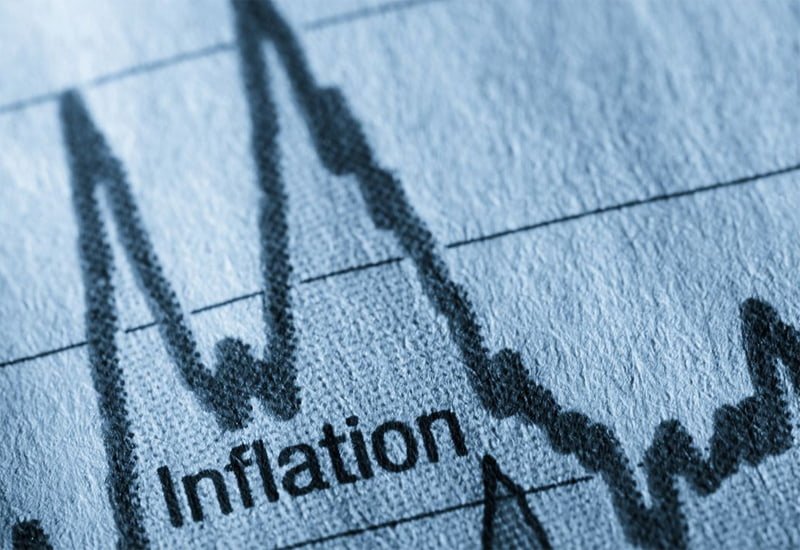
Inflation is the consistent increase in the price level of goods and services.
Usually, inflation is a broad measure denoting the rise in overall prices or increase in the cost of living for a given period. But it can also be calculated for individual commodities and services.
According to the US Bureau of Labor Statistics, the country’s inflation rate was 7.9% in 2021, far above the recommended 2% level.
10 Common Effects of Inflation (Positive & Negative)
Here are the ten consequences of rising inflation:
- Reduces Purchasing Power
- Lowers Currency Valuation
- Inflates Interest Rates
- Increases Economic Inequality
- Raises Cost of Living
- Boosts Spending and Investment
- Lowers Unemployment (But Not Always)
- Stimulates Short-Term Growth
- Increases Asset Prices
- Downsizes Effective Debt
1. Reduces Purchasing Power

The immediate impact of inflation is a reduction in your purchasing power.
Purchasing power refers to the number of goods and services you can buy with a currency unit.
As inflation rises, you'll have to spend more to buy the same quantity of products or services, limiting your purchasing power.
For instance, while a loaf of bread cost $0.50 in 1980, you'd have to pay $2.12 to purchase it in 2021. The higher price indicates 40 years of steep inflation eroding your purchasing power.
2. Lowers Currency Valuation

Rising price levels result in money losing its value.
Currency value drops because you have to spend more to buy the same amount of goods and services.
Between 1980 and 2019, the US dollar lost over 50% of its value. This means that you can buy only half the quantity of commodities or services today with the same amount of money as in 1980.
Furthermore, during the pandemic in 2020, the dollar weakened, losing a tenth of its value compared to the Euro.
3. Inflates Interest Rates
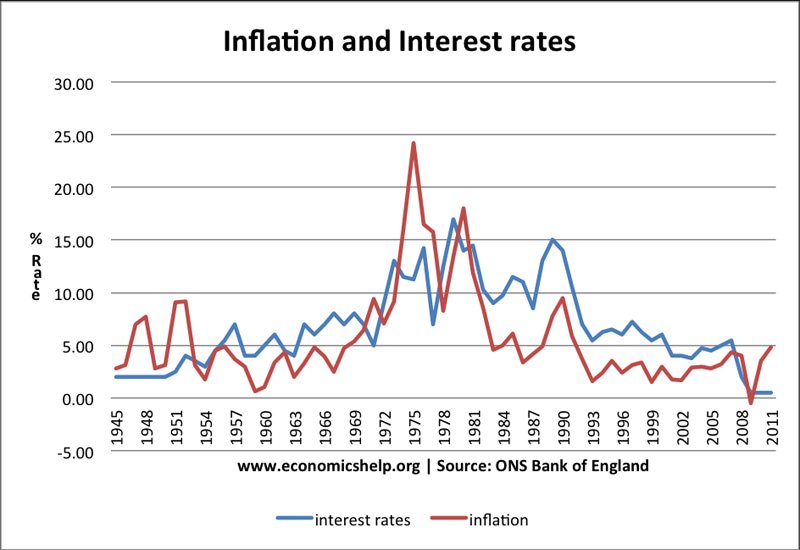
Persistent inflation means there’s excess money supply. And one way to reduce the money circulating in the economy is through higher interest rates.
Raising interest rates has been a tried and tested monetary policy to handle inflation.
When there’s high inflation, central banks increase interest rates to discourage borrowing and curb surging prices. As interest rates rise, you tend to save more by cutting back on expenses. In turn, the money supply decreases, making it more scarce and valuable.
4. Increases Economic Inequality

Low-income households and minimum wage workers suffer the most during inflationary periods. With increasing prices of basic necessities, they have to spend a larger proportion of their income on food, fuel, health, housing, and other necessities.
On the other hand, wealthy households that own assets such as stocks, real estate, or gold reap the benefits of inflation. Since these asset prices outpace the inflation rate, their owners earn high returns and become wealthier.
So, while the poor have to spend more just to survive, the rich shore up their profits and earn more, fueling economic inequality.
5. Raises Cost of Living
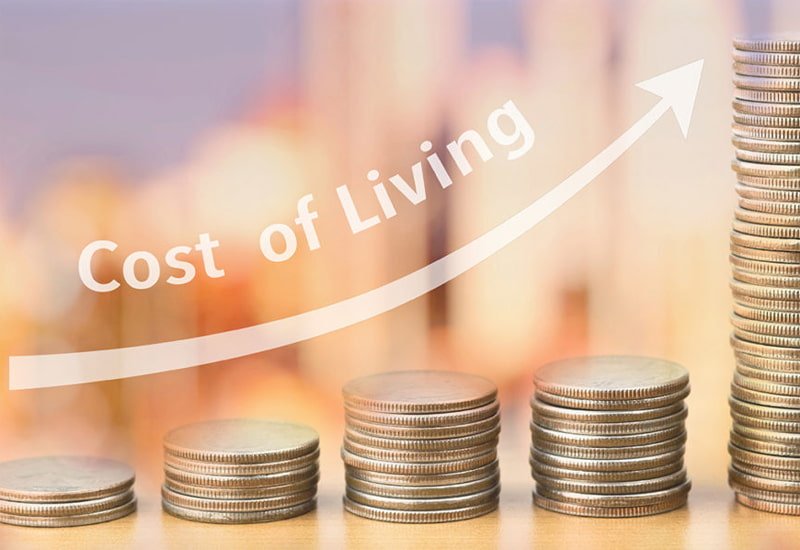
As the costs of goods and services increase, consumers have to spend a higher percentage of their income to maintain their current standards of living. But if wages don’t undergo a proportionate rise, you’ll have to spend more even for basic necessities.
However, even if your earn more during inflation, you're likely to be pushed into a higher tax bracket.
Low-income earners are also at a disadvantage since the minimum wage does not necessarily rise at times of inflation. In turn, their nominal income lags behind the rest of the economy.
6. Boosts Spending and Investment
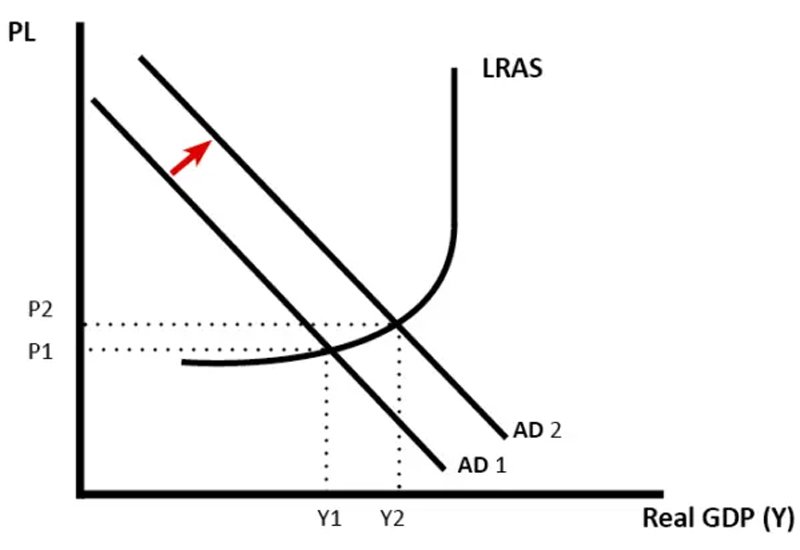
The depreciating value of money during inflationary periods often compels consumers to spend more before the value of their cash goes down further. Here’s how inflation expectation triggers you to spend and invest more:
- Consumers stock up on fuel, food, commodities, apparel, and so on, fearing higher future inflation.
- Businesses undertake immediate capital investments that would otherwise happen in the future.
- Investors purchase assets like gold to offset the losses incurred due to rising price levels.
7. Lowers Unemployment (But Not Always)

There was a theory that a higher inflation rate could reduce unemployment. The logic was that high inflation increases money supply, which in turn, fuels demand. As demand increases, businesses would need to hire more employees.
According to the ‘Phillips Curve’ developed by economist A.W. Phillips in 1958, inflation and unemployment share a stable, inverse relationship - as inflation increases, the rate of unemployment declines.
But since the 1970s, there hasn’t been a clear correlation between inflation and unemployment. In the wake of the COVID-19 pandemic, for instance, labor participation in the US failed to recover even with high inflation.
In fact, Federal Reserve Chair Jerome Powell admitted that the Phillips Curve has almost flattened, revealing the link between unemployment and inflation has weakened over the decades.
8. Stimulates Short-Term Growth
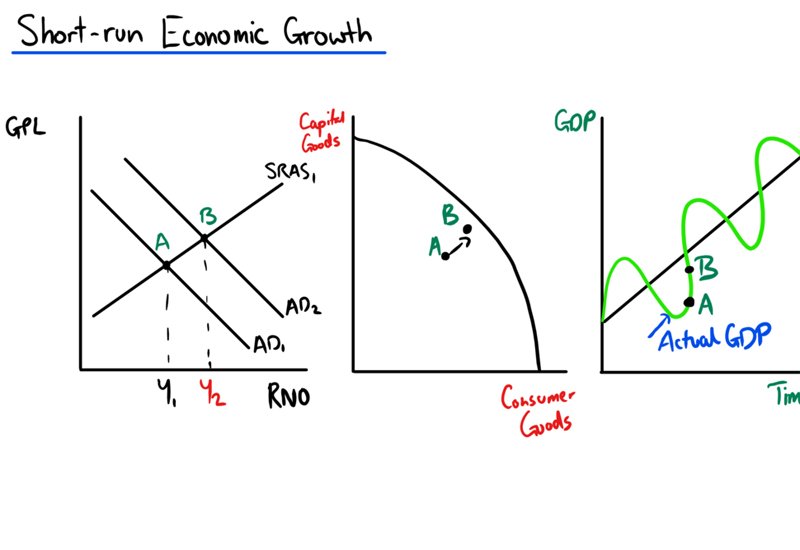
Inflation occurs due to an excessive money supply in an economy. This surplus supply drives greater demand, encouraging more consumer spending. When you spend more on consumer goods and services, you contribute to the economy’s growth.
So, a moderate inflation rate spurs economic activity and increases the growth rate in the short term.
However, as inflation rises and prevails for a long time, countermeasures such as higher interest rates curb spending and push back growth.
9. Increases Asset Prices

During continuous inflationary periods, businesses and consumers shore up their money in non-liquid assets like fine wine, real estate, gold, stocks, and bonds. Such assets outpace inflation, and their prices increase faster than the price of other goods and services.
10. Downsizes Effective Debt

If you’re a debtor, your money to pay off your loan or mortgage loses value during inflation. For instance, if you make $100 monthly payments towards a loan, the value of the $100 keeps going down as long as inflation persists.
But wages and salaries increase with inflation.
So how does that affect debt repayment?
Your effective debt repayment rate decreases if your income rises with growing inflation. While this benefits debtors in the short-term, consistent higher price levels drive banks to push up interest rates to safeguard themselves against inflationary pressure.
As a result, debtors might struggle to receive credit if inflation persists.
Now, let’s answer some common questions you may have about inflation.
What Causes Inflation?
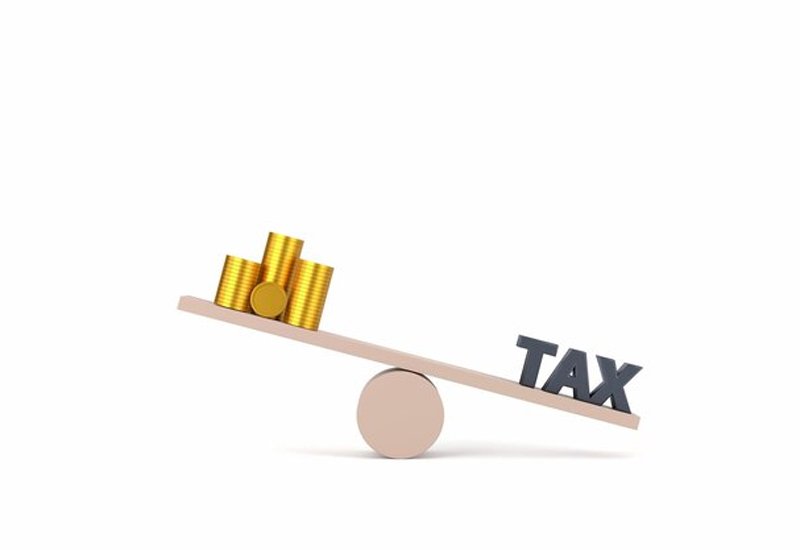
The primary cause of inflation is a variation in the total demand and supply of consumer goods and services in an economy. When demand increases faster than supply, the scarcity of goods and services pushes up prices.
The other factors that affect inflation are:
- Changes in monetary policy: Certain policy changes by a nation’s central bank may result in inflation. For instance, the lowering of interest rates by the US Federal Reserve in 2021 increased the money supply leading to a higher cost of goods and services.
- Supply chain constraints: A business’s supply chain is the network that delivers goods and services to you. Any bottlenecks or delays in the supply chain can cause a shortage of goods and labor resulting in price hikes.
- Cost of doing business: Setting up and maintaining a business includes energy, labor, production, and transportation charges. Any rise in these expenses is passed on to consumers, driving prices up.
- Wage-price spiral: As prices increase, workers demand higher wages, leading to further price rise. High inflation pushes up wages again as workers seek higher wages to meet rising costs.
This cyclic process creates a persistent increase in inflationary pressure.
What Are the Different Types of Inflation?
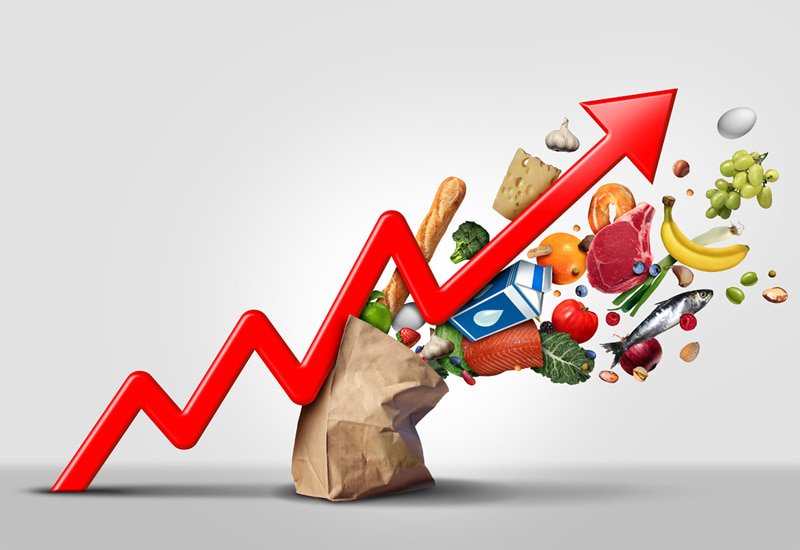
Depending on its cause, inflation can be categorized as:
- Cost push inflation: Cost push inflation occurs due to rising costs of the production factors. The factors of production include essential inputs such as land, labor, capital, and enterprise needed to produce goods and services.
Producers hoping to earn profits pass on these additional costs to consumers, leading to a general increase in the price level.
- Demand pull inflation: Demand pull inflation occurs when average demand outpaces average supply. When the demand for commodities or services increases during periods of scarcity, it fuels an economy-wide price hike, resulting in inflation.
Inflation can also be classified based on its rate of increase:
- Creeping inflation: Occurs when there are low inflation rates of 3% or less per year
- Walking inflation: Occurs when price rise stays between 3 to 10% per year
- Running inflation: Occurs with a rapid price increase of 10 to 20% per year
- Hyperinflation: Occurs rarely when prices surge past 50% in a month
- Stagflation: Occurs when price increase happens even with stagnant economic growth
However, sharp price fluctuations can also result in deflation.
What Is Deflation?

While inflation is all about rising prices, deflation is the exact opposite.
An overall decline in the prices of goods and services in an economy in a given period is called deflation. Deflation happens due to:
- An increase in the supply of products and services in an economy
- A decrease in the overall or average demand
- A decline in money supply and credit
How Is Inflation Measured?
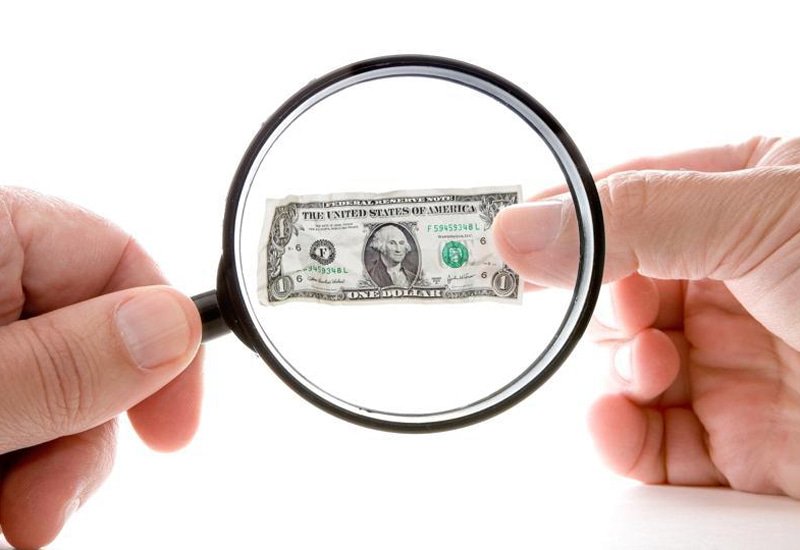
Inflation is measured by a metric called the Consumer Price Index (CPI.)
The Consumer Price Index measures the average change in prices of a basket of goods and services over a particular period. It covers a fixed set of commodities and services and excludes savings, investments, and foreign visitors’ spending.
In the US, the Bureau of Labor Statistics publishes monthly CPI reports.
While measuring inflation, economists focus on ‘core inflation.’ Core Inflation covers the change in the prices of products and services, excluding food and energy costs.
What Are the Steps Taken by Governments to Counter Inflation?
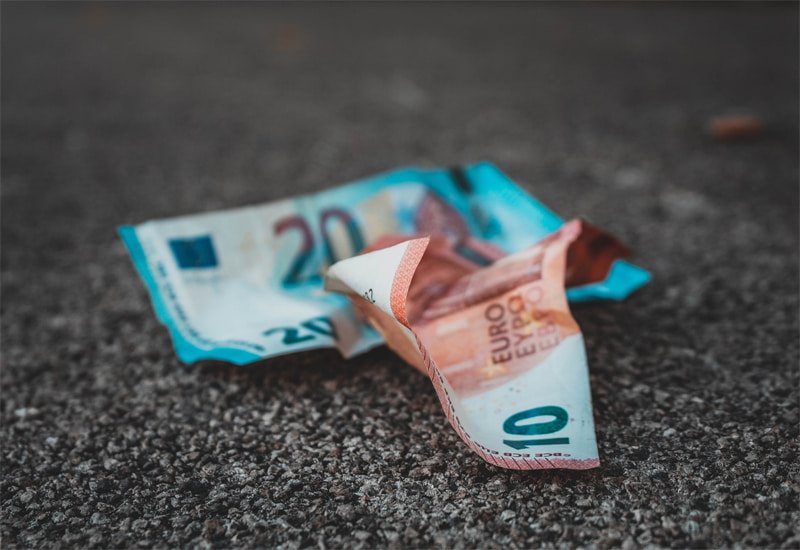
A nation's central bank tweaks its monetary policy to combat higher inflation while its government implements fiscal policy changes.
The two monetary policy shifts to counter inflation are:
- Increased interest rate: The central bank raises its interest rates to discourage borrowing and consumer spending. The higher interest rate curbs the economy’s liquidity, and your spending ability, arresting rising inflation.
- Higher reserve requirements: The central bank can also raise the reserve requirements for the nation’s banks to counter inflation. Higher reserve requirements limit a bank’s lending capacity, slowing down economic activity, and resulting in low inflation.
The two steps the government undertakes to fight rising prices are:
- Restricted government expenditure: The government restricts its spending to counter rising prices. The sharp inflation in the US between 2020 and 2021 can be attributed to the government’s excessive spending (equivalent to 27% of the GDP.)
Reducing government expenditure restricts the money supply, leading to low inflation.
- Higher taxes: The government can also control inflation by imposing higher taxes. High taxation decreases the availability of spendable funds, reduces real income, and restricts money circulation, preventing higher inflation.
How Can You Protect Yourself from Inflation?
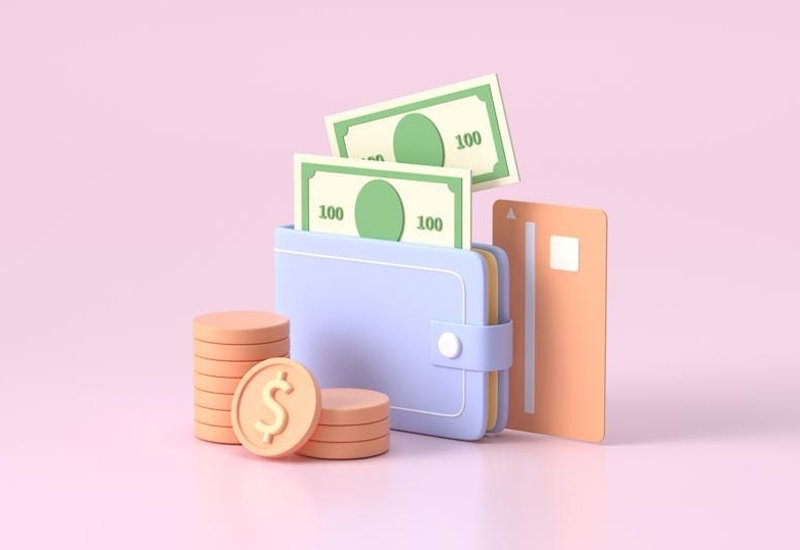
Here are a few ways to protect yourself from inflation:
- Invest in alternative assets like precious metals and collectibles: While traditional assets may fluctuate during economic turmoil, alternative investments like precious metals, gemstones, and wine can offset inflation expectations.
However, while gold and real estate may be evergreen assets, the fine wine market is less volatile and has outperformed most exchange-traded funds (ETFs) and global equities. It has also yielded 13.6% annualized returns over the past 15 years.
Vinovest is the best place to start your wine investment journey and build a profitable portfolio of investment-grade wines. Its AI-based platform lets you buy, store, and sell premium wines from around the world.
- Diversify your investment portfolio internationally: Any downfall in your domestic stocks can be balanced and even overcome by investing in stocks from countries with low inflation rates.
- Invest in inflation-adjusted asset classes: These are assets like inflation-linked bonds issued by different central governments. The Treasury Inflation-Protected Securities (TIPS) issued by the US government, for instance, is adjusted according to the CPI, guaranteeing reliable returns during inflation.
- Fixed annual return investments like bonds or certificates of deposit: These suffer during inflation. For instance, the fixed income/interest of $1,000 on your bank deposit will be worth much less during an ongoing inflationary period.
- Stocks and equities: Return from equities depends on the performance of the company issuing them. While your stock prices rise with inflation, higher wages and supply chain constraints can spur volatility in equities, affecting your profits.
Interestingly, the S&P 500 has returned an average of 10% since its advent in 1926, about 7% above the inflation rate.
- Inflation-adjusted bonds: Certain bonds and annuities are indexed for inflation risk and can be viable investment options during a high cost period. You earn stable returns from them even when inflation rises.
- Consider investing in real estate: The continuing demand for homes keeps property prices high during inflationary periods letting you earn more on your rental asset or property sale.
Investing in real estate also promises consistent, fixed income via dividends.
While the average inflation rate between 1980 and 2022 was 2.98%, prices for houses increased by about 3.09% in the same interval.
Safeguard Yourself Against Inflation By Investing in Fine Wine!
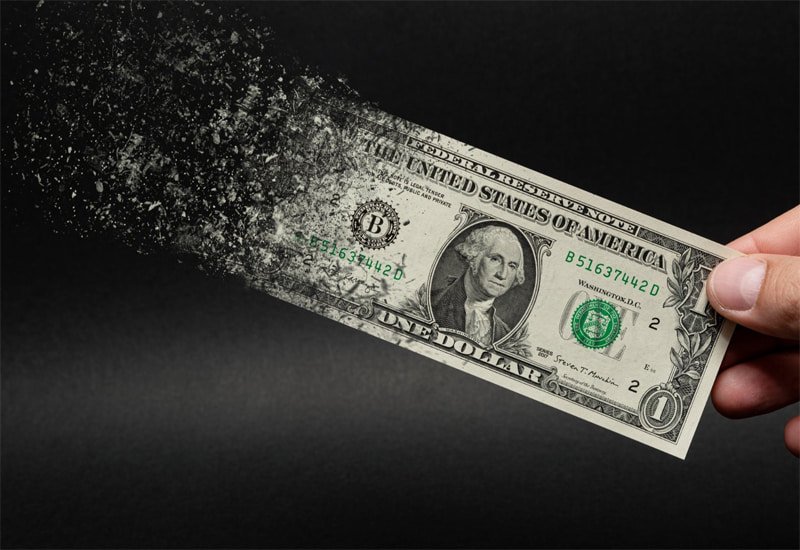
The effects of inflation are a mixed set of positive and negative consequences for an economy. Besides reducing purchasing power and increasing the interest rate, inflation also pushes up wages and spurs the economic growth rate.

But to be on the safer side and shield yourself against the adverse effects of inflation, you can invest in reliable assets like fine wines. Sign up with Vinovest to begin investing in the world’s prestigious wine labels today!



